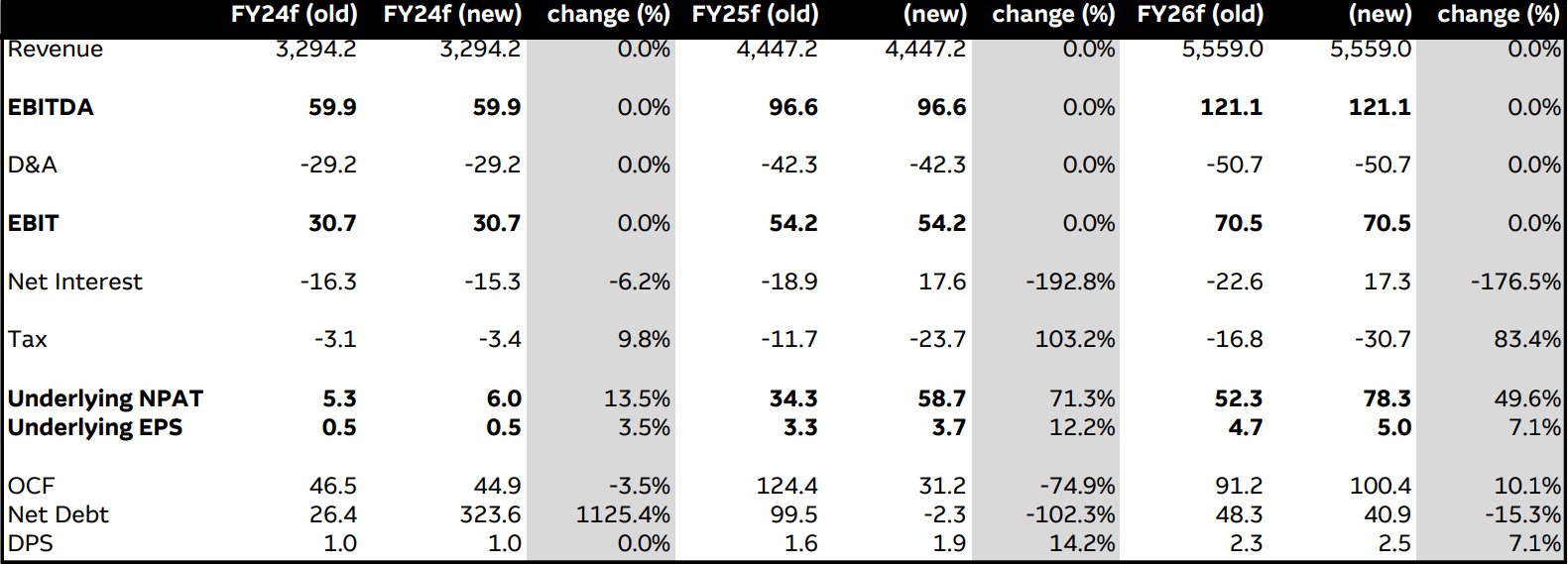Broker says Sigma “valuation stretched” post Chemist Warehouse takeover
Earlier this month, Sigma Healthcare (ASX: SIG) announced it had entered into a Merger Implementation Agreement to merge with Chemist Warehouse Group (“CWG”). The much smaller Sigma intends to pay existing CWG shareholders $700 million in cash and 573 million in Sigma stock. Post merger, there would be 14.25-85.75% split in ownership between Sigma and CWG shareholders respectively.
On the face of it, the deal appears mutually beneficial to both companies. It locks CWG in as a permanent customer for Sigma’s wholesale pharmacy products distribution business, it gives both companies great scale in terms of retail pharmacies, and it creates a pathway to listing for CWG which had publicly been investigating its options in this regard for many months.
Mac mulls merger
Today, major broking and research house Macquarie weighed in on the merger with a research note questioning whether there’s any value left in Sigma shares after its stock has rallied over 30% since the announcement.
First up, Macquarie notes the merger will “bring together one of Australia's largest wholesale pharmaceutical distributors in Sigma, with the leading retail pharmacy brand of CWG”. The “transformational transaction” brings with it significant risks, however, and possibly market pricing is not adequately pricing these risks.
According to Macquarie, “The biggest risk that investors will need to consider is the possibility that the ACCC blocks the merger”. The ACCC could baulk at the fact a merged Sigma-CWG would likely control 940 out of the roughly 6,000 pharmacies nationwide.
Macquarie notes the ACCC has already flagged its concerns about mergers in markets where there’s a large incumbent, like Chemist Warehouse, which is presently the largest pharmacy chain in Australia. They’re also concerned the ACCC’s will exercise a negative view on the merger further “entrenching” Sigma-CWG’s “position of substantial market power”.
Macquarie also points out that even if the deal clears the ACCC, there are other potential regulatory issues, particularly with respect to the way CWG manages its franchise agreements. The broker cites the confusion over NSW franchise agreements as a “key risk”. Macquarie wants more information from CWG to clarify how CWG’s franchise agreements “have changed over the years” and how they “fit within the regulation of each state”.
Indeed, the general “limited detail” of the deal, as Macquarie puts it, is another key risk in itself. The broker would love more information on MergeCo pro forma financials, commentary from CWG as to why it would go down the proposed path rather than simply IPO, how the Chemist Warehouse store rollout might be impacted by the deal and regulation, and what Sigma intends to do with all the capital it just raised if the deal doesn’t go ahead.
Mac’s bottom line on Sigma
The capital raise, and resulting restructuring of the balance sheet, would likely help Sigma to a modest 3.5% improvement in underlying EPS in FY24, growing to 12.2% in FY25, and moderating to a respectable 7.1% increase in FY26. This translates into a 4%, 15%, and 8% upgrade to Macquarie’s current underlying EPS forecasts for Sigma.

Macquarie pegs the probability of a “successful transaction” between Sigma and CWG at “60%” compared to at 40% chance the merger is either “blocked or altered”. In the first scenario, the broker suggests the fair value of Sigma is $0.96 per share, versus just $0.75 per share in the second.
Using a weighted average of the two, Macquarie suggests the most appropriate fair value estimate for Sigma’s shares is $0.88. Given the current share price based upon the session prior to the publishing of the report was $0.99, this results in Macquarie downgrading its rating for Sigma from “Neutral” to “Underperform”.
Adding some balance to their thesis, Macquarie also notes that the key upside risk to their new rating and valuation is the approval of the proposed merger as it has been proposed, as well as the operational leverage this will likely deliver.
This article was originally published on Market Index on Wednesday 20 December.
5 topics
1 stock mentioned

